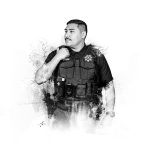
Texas sb 12 grant is open – Apply NOW






The sun came up. Alarm clocks buzzed. Thousands of people got in their cars and drove to work, the same route as yesterday. The day’s as normal as they come.
The rush hour traffic requires constant monitoring. Just as normal as the day is for the commuter, it’s just another day on patrol for the police officer. He wakes up. Puts one leg in after the other and completes the daily ritual. Though, a layer of concealable body armor and 30-pound duty belt require a bit more time and attention than the common pantsuit.
He gets in his vehicle, coffee in-hand, and begins his patrol shift. As the morning progresses and after several traffic stops, a few warnings are distributed, one ticket for 20 miles over the limit is issued — as expected for another day on patrol.
It’s about half past 10 when the officer spots a vehicle gliding into the left lane, no blinker. He waits, gives the benefit of the doubt as he analyzes the situation. After the third lane change without a signal, he decides it’s time to initiate a stop and investigate. With lights and sirens on, he pulls the tired white sedan to the side of the road, no problem. Waiting in his patrol car, the police officer gives the driver a few minutes to gather his license and registration. Before he approaches the vehicle, his senses are heightened when he notices the eyes of the driver peering at him through the white sedan’s rear-view mirror. It’s not totally absurd, just a bit odd. On a typical patrol day, most people are frantically searching their glove box for proof of insurance or attempting to put on their seatbelt, as if it’s been on the whole time. The eerily calm demeanor of this Caucasian, middle-aged male is noteworthy.
To pressure test the situation, the officer moves his body to the right, out of direct sight of the rear-view mirror. In tandem, the driver changes his position. The officer moves to the left. Same story.
Acting on gut instinct, he confronts his uneasy nerves and begins to address the situation as safely as possible. The officer stays in his patrol car and requests over his PA for the driver to get out of the vehicle, showing his hands as he does. No motion. The officer assesses the situation and takes mental note of the equipment available to him. He notes his protective advantage: his driver’s side door is equipped with an Angel Armor Level IIIA Ballistic Door Panel.
Here’s where you help us finish the story:
Looking forward to gaining new perspective from members of the highly trained Law Enforcement community,
Angel Armor
Drop us a line, and we will get back to your promptly!
Drop us a line and we will get back to you promptly!